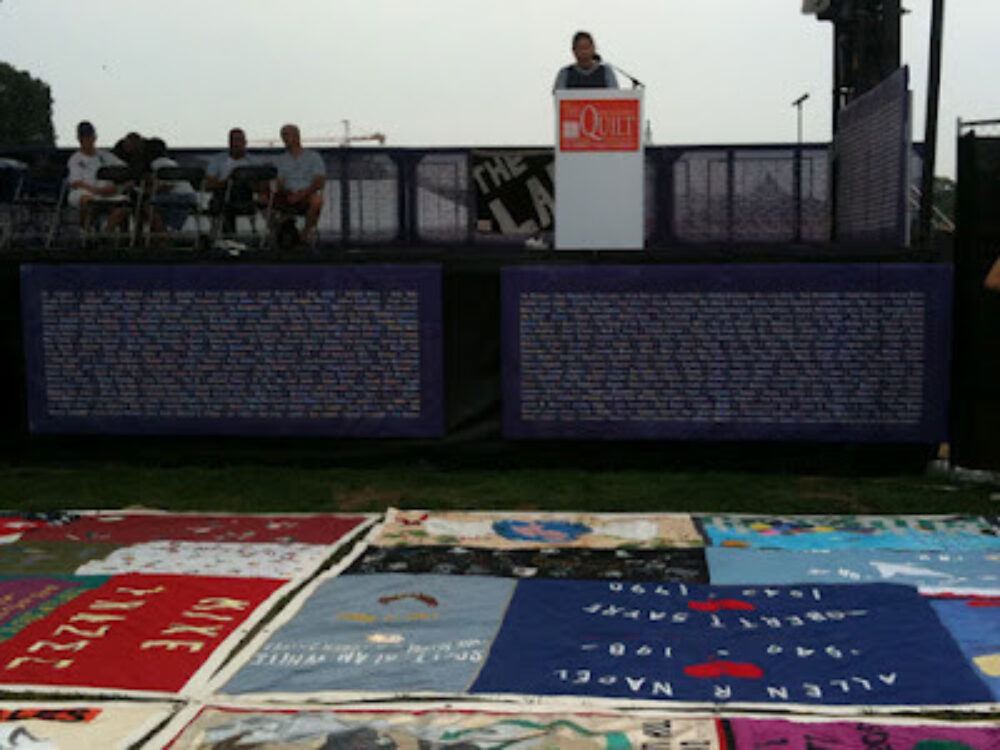On a steamy Tuesday afternoon, July 24th, Amy Sadao, Ted Kerr and I visited The AIDS Quilt on the National Mall in DC. At 11 AM, there was a scattered crowd, many quietly reflecting on the panels, some children running about asking why the blankets where on the floor and a few tourist posing at the unexpected attraction.
I had seen individual panels of the quilt objectively hanging in museums and churches over the years, but this was different. This was the first time I had seen so many of them, laid out on the ground, under the elements. (The last time the Quilt was displayed on the National Mall in Washington, D.C., was in 1987, and it included 1,920 panels). In the past, I often thought of the quilt as a touching, but somewhat benign symbol - easier to digest than the graphic posters Gran Fury or shouting of ACT UP, but laying on the cold dirt, each panel about the size of a grave, one after another was a reminder that silence still equals death.
The effects of time was also a reminder of how long we have been at battle. Some of the images are beginning to fade or crumble, and though the skinny ties and worn speedos, so lovely sewn on, may remind us of another decade, they also embody each loss with the immediate recognition of what's missing - bodies. Loving bodies that sweat, cried, danced, played, hugged, fought, marched and lived.
These were some of the thoughts in my head as Amy began to read the names of artists and friends we have loss. Not just of names people who died years ago, but also friends who passed away months ago, like Barton Lidice Benes and Robert Miles Parker. The names breaking the silence.
In this overwhelming moment, it begins to rain. The volunteer staff shout out for help to fold the quilts. No one hesitated. We all ran to a quilt, and folded the panel in half, then quarters and again until they were in small bundles. I was immediately taken by the weight of the quilts, the urgency of the matter and how quickly we all worked together - partnering with friends or someone we just meet. We ran from one quilt to another, leaving our things behind, until all the panels were folded. Hot and drenched in sweat, we were then asked to move the panels to the side, where the piles would be covered in plastic. For many, this now became an individual mission. The easiest way to carry these panels (the weighed of a limp body) was to reach down and wrap your arms around the quilt, holding it tight against your sweating body, then carrying it over to the side and gently laying it to rest. Your DNA now part of the of sweat and tears of friends, strangers, and love ones who came before you.
A reminder that we are still in this together.


